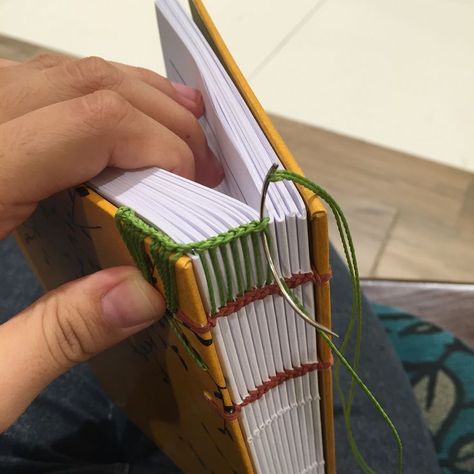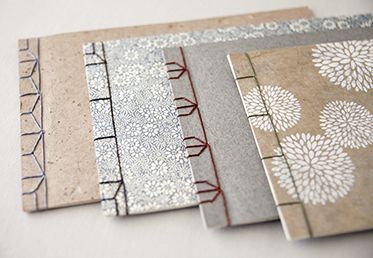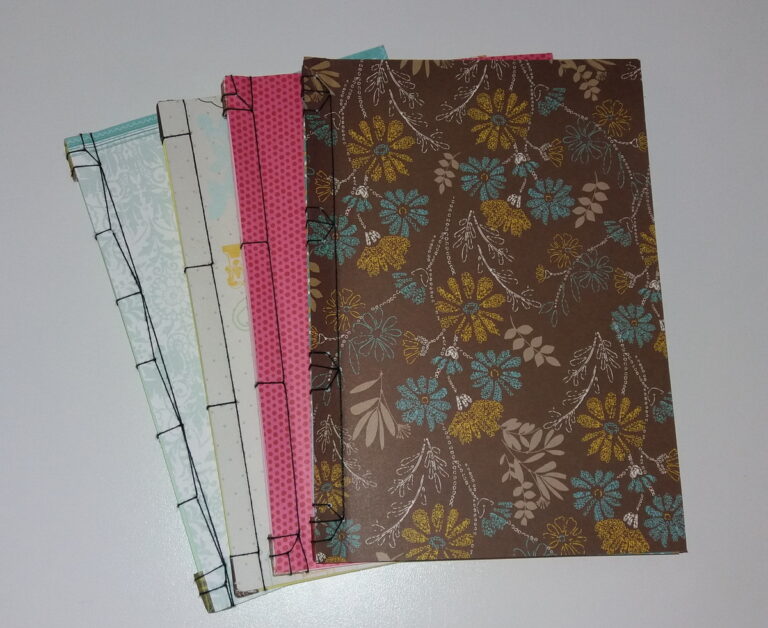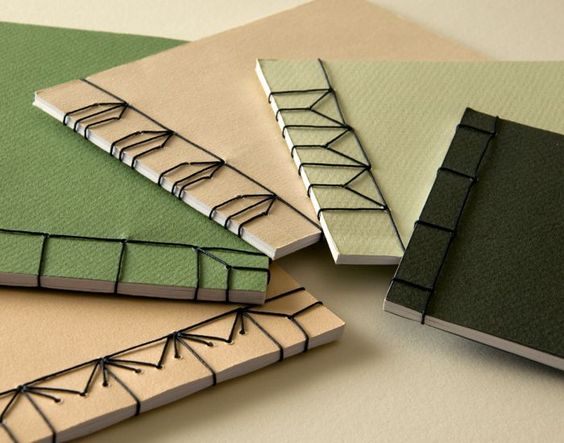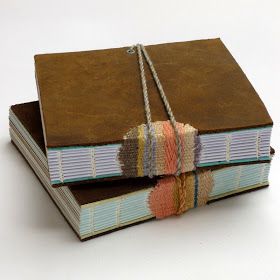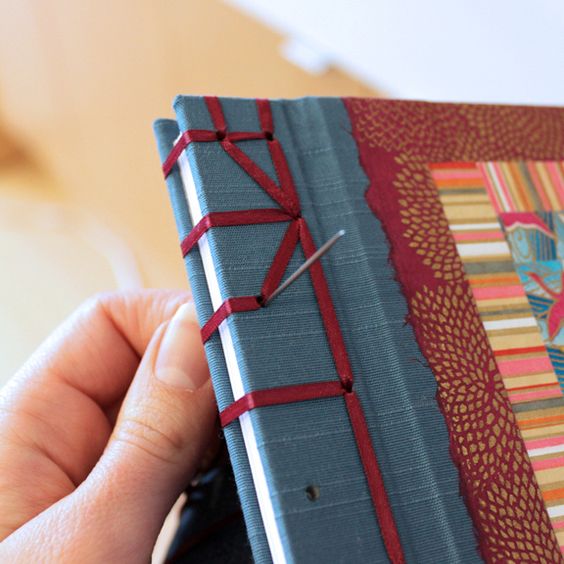Charming Minimalism: Japanese Bookbinding Projects with Few Materials
In the contemporary era, where complexity often dominates our everyday lives, minimalism has become an increasingly adopted philosophy of life. This approach seeks to simplify all aspects of life, from the environment we live in to the activities we carry out. One field in which minimalism has been notably embraced is Japanese bookbinding. This art form combines traditional Japanese elegance with the simplicity of minimalism, resulting in stunning binding designs, even with the use of few materials.
Minimalism in Japanese bookbinding refers to an aesthetic approach that emphasizes simplicity, purity, and economy of elements. This approach emphasizes the essence of the design, often reducing details and decorative elements to a minimum to create a clean, elegant result. Here are some characteristics of minimalism in Japanese bookbinding:
- Simplicity in Sewing: Minimalism is often reflected in the choice of simple and straightforward sewing patterns. Instead of complex stitching patterns, simpler techniques such as straight stitching (Kangxi toji) or four-hole stitching (Yotsume toji) are used.
- Basic Materials: The use of simple, high-quality materials is a fundamental characteristic. Traditional washi paper, for example, is prized for its natural texture and smooth appearance. Covers can also be made from simple materials such as raw cardboard or cotton fabric without fancy adornments.
- Neutral or Monochromatic Colors: Minimalism often adopts a neutral or monochromatic color palette. Colors such as white, black, gray and natural tones are preferred to maintain a clean and unfussy look.
- Few Decorative Elements: Minimalism avoids the excessive use of decorative elements. Any decor present tends to be understated and complementary to the overall design. This can include small details like a discreet seal or stamp, rather than elaborate illustrations or embellishments.
- White Space: Smart use of white space is key in minimalism. Sufficient space is left between elements to create a feeling of balance and calm.
- Functionality: Minimalist binding often focuses on functionality. Designs are designed to serve the main purpose of the book or album, without visual distractions or unnecessary elements.
In short, minimalism in Japanese bookbinding seeks to create pieces that are elegant and timeless, valuing simplicity and quality of materials. This aesthetic approach is appreciated for its ability to convey a sense of serenity and harmony, as well as its focus on the essence of design and user experience.
Table of Contents
The Essence of Japanese Bookbinding
Japanese binding, also known as “Yotsume Toji” or “Four-Hole Binding”, is a technique that has its roots deeply linked to Japanese culture and aesthetics. She stands out for her simple and effective approach, which creates truly unique books and notebooks. The beauty of this technique lies in its ability to transform basic materials into enchanting works of art.
The history of Japanese bookbinding dates back more than a thousand years ago, during the Heian period (794-1185) in Japan, when nobles and aristocrats used manuscripts and parchment. The first Japanese books were handmade and consisted of loose sheets of paper or parchment, which were folded and stitched together to form a volume. However, this technique was mainly reserved for noble and religious materials.
Over time, Japanese bookbinding evolved and became popular. During the Edo period (1603-1868), there was an increase in the production of books and documents, and Japanese bookbinding became a common bookbinding technique. It was often used to bind literary texts, practical guides, and government documents.
The Japanese bookbinding technique is characterized by the use of individual sheets of paper or cardboard, which are perforated along the edge and sewn together with threads. There are several variations of sewing patterns, including “Kangxi” (straight stitching), “Noble Binding” (feudal lord stitching), “Hemp Leaf” (hemp leaf stitching), among others.
In addition to its practical function of holding pages together, Japanese binding is valued for its aesthetics. Sewing patterns can be elaborate and decorative, and the choice of materials, such as traditional washi paper, can add a sense of authenticity and beauty to books and albums.
Today, Japanese bookbinding is appreciated around the world not only for its functionality, but also as a form of art and cultural expression. Many artists and artisans continue to practice and teach this traditional technique, keeping an important part of Japanese culture alive. Additionally, Japanese bookbinding is often used in graphic design projects and handcrafted book production, making it a versatile and appreciated technique in the contemporary world.
Less is More: Materials Used
The philosophy of minimalism is often summed up in the expression “less is more”, and this is exemplified in Japanese bookbinding. Unlike more complex binding methods that may require a variety of materials, Japanese binding shines by using just a few key elements. Typical materials include high-quality paper, waxed thread, and a needle.
Paper plays a crucial role in this form of binding. It not only serves as the pages of the book, but also defines the overall aesthetic. Premium quality paper not only feels good to the touch, but is also more durable, ensuring the work will stand the test of time.
Waxed thread is used to stitch together the pages and create the basic structure of the book. The choice of yarn is not only functional, but also adds an aesthetic element. The variety of colors available allows the artisan to choose a tone that complements the chosen paper, resulting in a charming visual harmony.
The waxed thread used in Japanese bookbinding is called “silk thread,” although it can also be made from other materials, such as linen or cotton, depending on the bookbinder’s preferences. The distinguishing feature of this thread is that it is waxed to make it more durable and make it easier to sew books and albums. Here’s an overview of how waxed thread is made:
- Choice of material: Traditionally, silk is the preferred material for making waxed thread, as it is strong and has a smooth surface that makes sewing easier. However, some modern bookbinders also use linen or cotton, depending on the desired effect.
- Washing and preparation: The chosen material is washed and prepared to remove impurities and ensure it is clean and ready for the waxing process.
- Waxing: The next step involves applying wax to the hair. The wax can be beeswax, paraffin or carnauba wax. The choice of wax affects the color and texture of the waxed thread. The wax is melted and the thread is dipped or coated in the melted wax. This is done to saturate the thread with the wax and ensure it is moisture resistant, durable and easy to handle.
- Cooling and drying: After applying the wax, the thread is allowed to cool and dry. This allows the wax to harden and set into the thread, making it stiff enough to maintain its shape while sewing.
- Cutting and Storage: The waxed thread is then cut into lengths appropriate for the bookbinding project. Pieces of wire are usually wound on spools or bobbins for ease of use and storage.
The end result is a waxed thread that combines the characteristics of durability, flexibility and moisture resistance. This thread is ideal for sewing the pages of a book or album in a safe and lasting way. The choice of waxed thread color can also be important to the design of the binding project, as it can be used to complement or contrast with the colors of the paper and cover of the book or album.
The needle is a simple but fundamental tool. It is used to make holes in the paper pages through which the thread will pass. Precision in the placement of these holes is crucial to ensure that the pages are aligned correctly.
Simple Steps to Elegance
The Japanese bookbinding process can be broken down into simple steps, but it requires attention to detail to achieve truly impressive results.
- Paper Preparation : Cut the paper to the desired size for the book pages. Fold each sheet in half carefully to create the shape of the book.
- Marking the Holes : Use precise measurements to mark the locations where the holes will be drilled along the fold. These holes are usually drilled in symmetrical patterns, keeping the aesthetics balanced.
- Drilling : With the needle, make holes at the points marked on the pages. The technique requires patience and precision to ensure that the holes are aligned on all pages.
- Sewing : Thread the waxed thread through the needle and begin sewing the pages together. The specific stitching technique may vary, but the end result is a structure that holds the pages together elegantly.
- Finishing : Tie the thread well at the end of the seam and cut off the excess. Make sure all knots are secure to prevent the book from falling apart.
The Beauty of Minimalism in Binding
Minimalism is not just an aesthetic approach, but also a philosophy that values intentionality and simplicity. Japanese binding embodies this philosophy exceptionally. By using just a few materials, this binding technique creates a beauty that transcends unnecessary complexity.
The simplicity of Japanese binding designs not only captivates visually, but also awakens a sense of tranquility. The absence of superfluous elements allows the mind to focus on the texture of the paper, the precision of the stitching and the essence of the words written on the pages.
Conclusion
The charming minimalism of Japanese binding designs using few materials reminds us of the beauty that lies in simplicity. As the world accelerates toward complexity, this art form offers a haven of calm and focus. Through the combination of basic materials and refined techniques, Japanese bookbinding captures the essence of minimalism in a truly captivating way.

